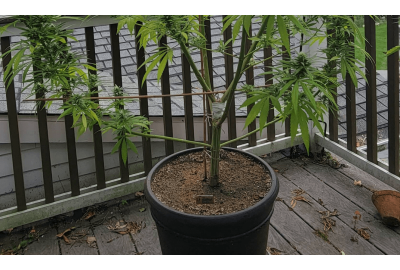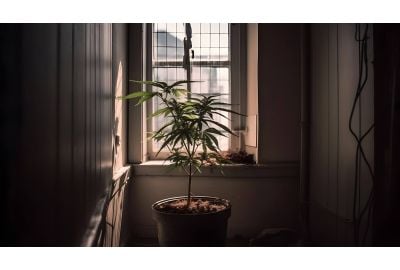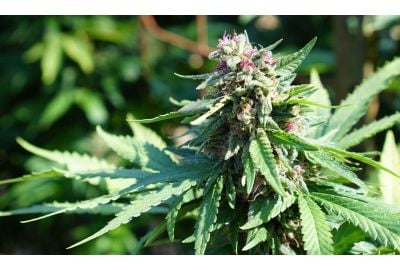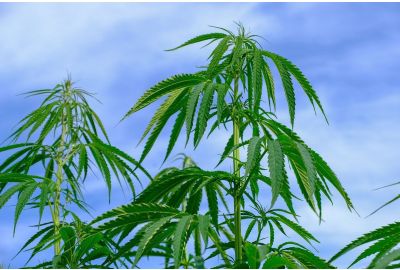Low Stress Training (LST) Complete Guide
We’re taking a deep dive on low stress training today. This low-effort, beginner-friendly technique is well known but shamefully overlooked. With a minimal investment in equipment, you can vastly improve your harvests.
Remember how chill Mr. Miaggi from the Karate Kid movies was when he took care of his bonsai trees? Imagine how much more chill he would have been if he created cannabis bonsai trees!
Today we’ll be your sinsemilla sensei and teach you to become one with your plants. You’ll learn to carefully guide their growth and leave every leaf soaked in light. We’ll teach you how to shape your plants to coax huge harvests of bud from them.
In the following sections, we’ll be going over all the need-to-know info on low-stress training in cannabis. We’ve got lots to get through, so if you’re ready to get started, let’s begin!
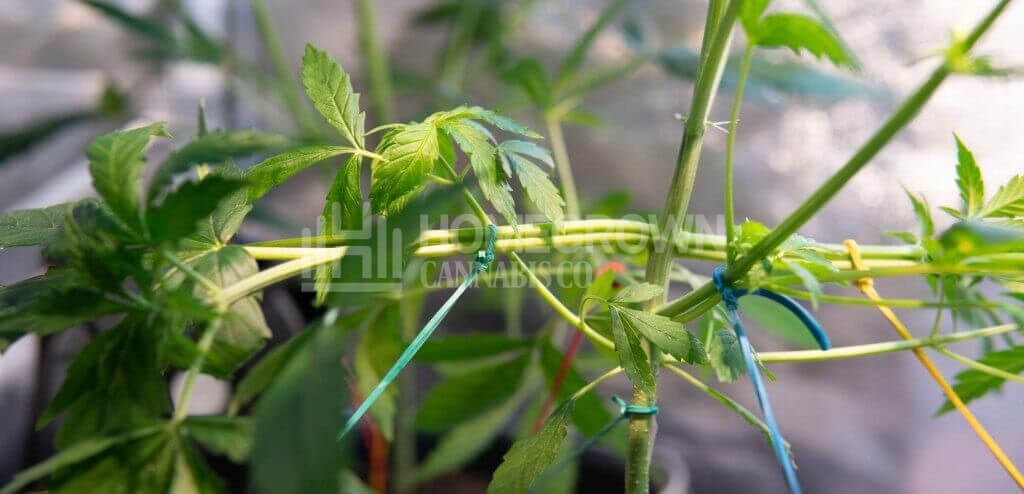
What is low stress training (LST)
Low stress training (LST) is a simple way to increase yields by redirecting plant growth to maximize light coverage.
As the name implies, LST techniques allow cultivators to train their plants without causing serious stress. High stress training methods such as mainlining and topping can impact growth negatively, stunting growth and potentially exposing the plants to infection.
LST training cannabis involves bending stems and branches of growing plants and securing them using plant ties. Low stress training marijuana isn’t something you do once and you’re done. You’ll need to do a little bit each day to maintain your desired growth pattern.
While it’s a little more work in the garden, we strongly recommend this method to everyone looking to maximize their yields. Low stress training cannabis is one of those things cultivators procrastinate on, but once they do it, they never look back.
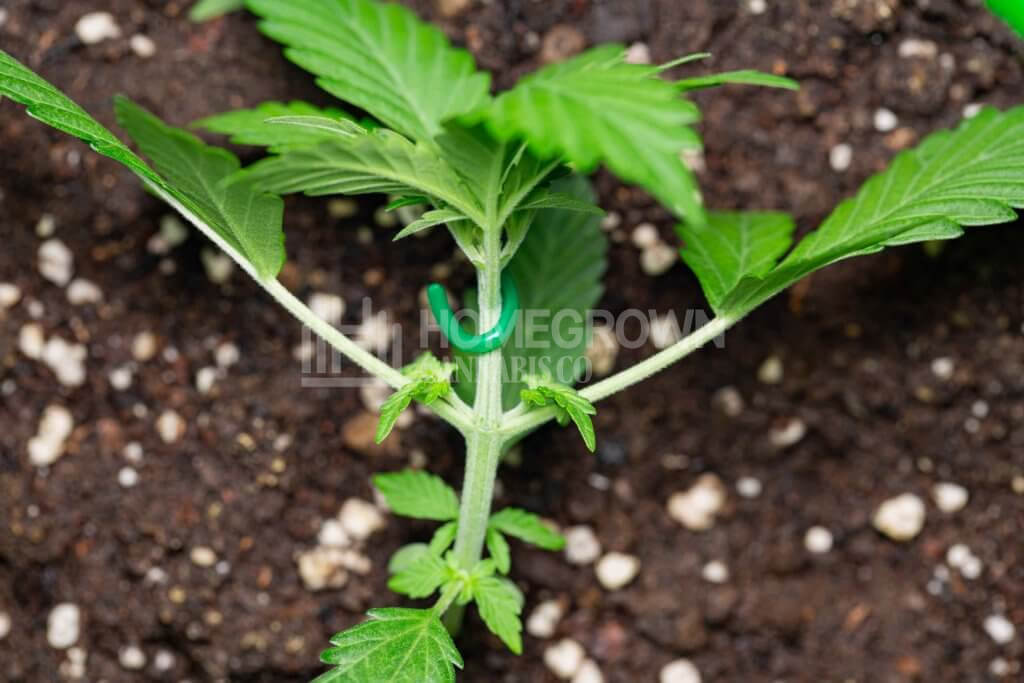
What does low stress training do?
Untended cannabis plants can vary from strain to strain, but they all exhibit something that’s known as apical dominance. This is a fancy way of saying the plant grows like a Christmas tree. The result is a dominant central stem topped with the plant’s main cola, surrounded by lesser branches and inflorescences.
While there’s nothing wrong with growing cannabis this way, it’s not the most efficient growth structure in terms of flower production. The taller central portions of the plants are exposed to significantly more light, while the lower half is left in the shadows. The result is suboptimal flower growth on the lower, light-starved branches.
Low stress training overcomes these productivity issues by altering the plants’ growth structure. Breaking the plants’ apical dominance and creating a more even leaf canopy allows light to equally reach all parts of the plant.
By increasing the surface area of the plant exposed to light, more energy is produced through photosynthesis. Increased energy leads to new growth, which in turn produces more energy. The plants are naturally more productive by using more light, leading to exponential growth and, ultimately, larger yields.
While low stress training causes your plants to lose their classic shape, once they begin flowering, the benefits become clear. Instead of one main cola crowning your plant, you’ll have a small forest of fat colas standing side-by-side.
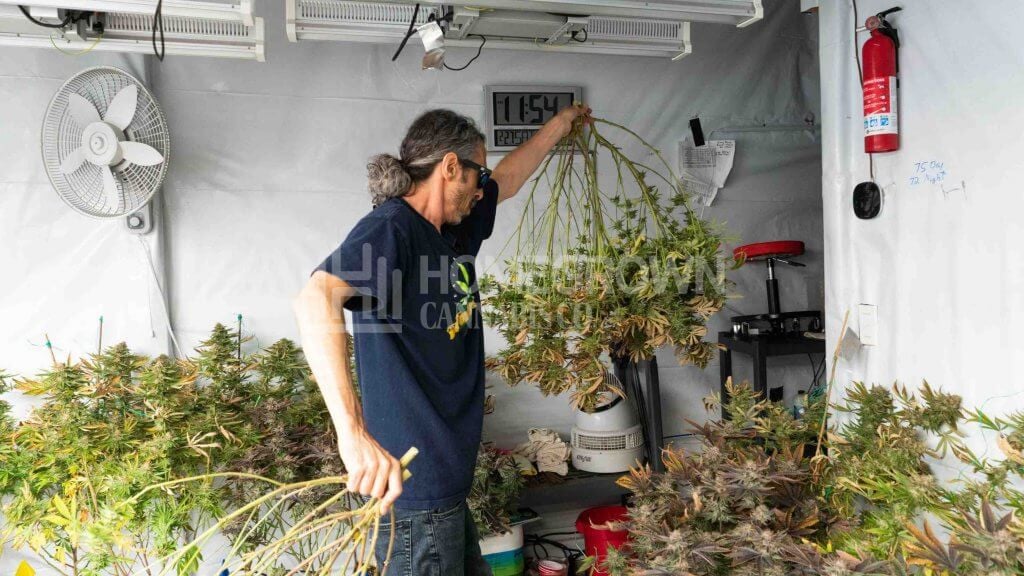
When to start low stress training
Now we move to the question of when to start LST. It's best to start low stress training cannabis early in the vegetative growth stage. Younger stems and branches are more supple and pliable, and you can train them easily. As the plant matures, it becomes more rigid, and bending firmer limbs can result in breakages.
While you want to start low stress training your cannabis plants early, you should wait until they’re firmly established. So how can you tell when your crops are established and ready for low stress training? You can count the cannabis plant's nodes to determine the answer.
Marijuana plants are dicotyledonous, which means they develop leaves in pairs. We call the area where each pair of leaves intersects with the main branch a node. Once the plants develop around 4–6 nodes, you can begin low stress training.
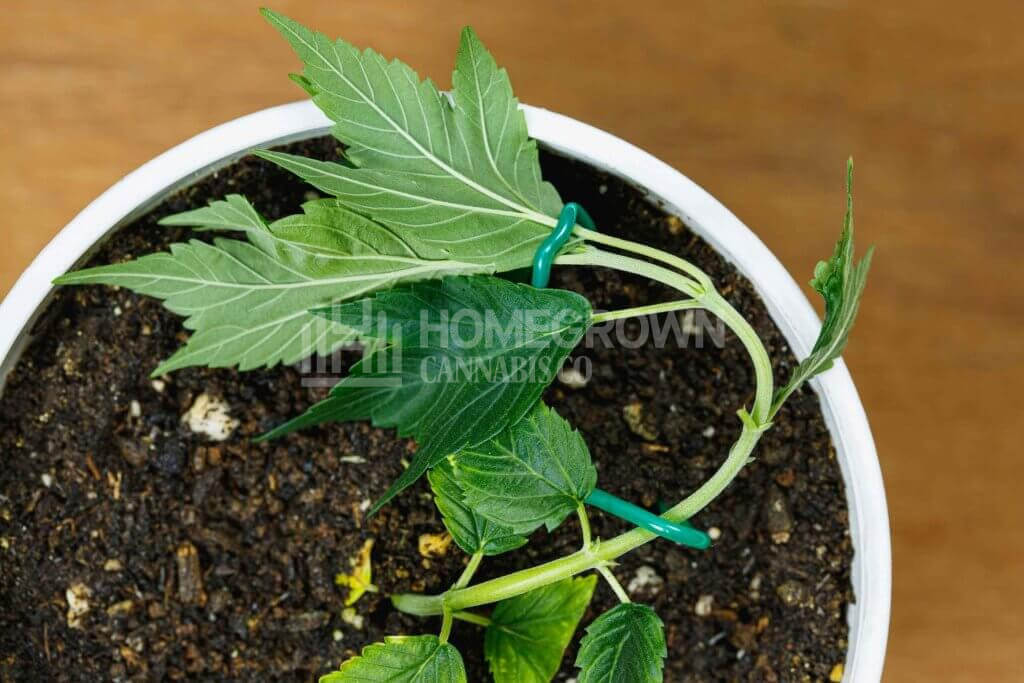
When to stop LST training
Low stress training usually stops around a month into the flowering phase of your plants. When cannabis starts to flower, it exhibits an initial burst of growth which lasts for several weeks. You can keep up your low stress training regime during this stretching period, maintaining a flat canopy as the plants reach for the light.
Around a month in, stretching stops, and the cannabis plants begin to focus their energy on flower production. At this point, vegetative growth slows greatly, and further training is usually unnecessary.
Another reason to stop low stress training during flowering is to minimize damage to the developing buds. Touching the delicate buds, even inadvertently, can rupture resin glands on the surface and impact quality. While it’s not the end of the world if you touch a bud, it’s best to avoid it if possible.
It’s very important to point out that you can’t start low stress training cannabis during the flowering phase. LST techniques are based on slow, gradual manipulation and training of the plant to reduce stress. Trying to start training a crop already flowering would seriously harm it, leading to reduced flower and cannabinoid production.
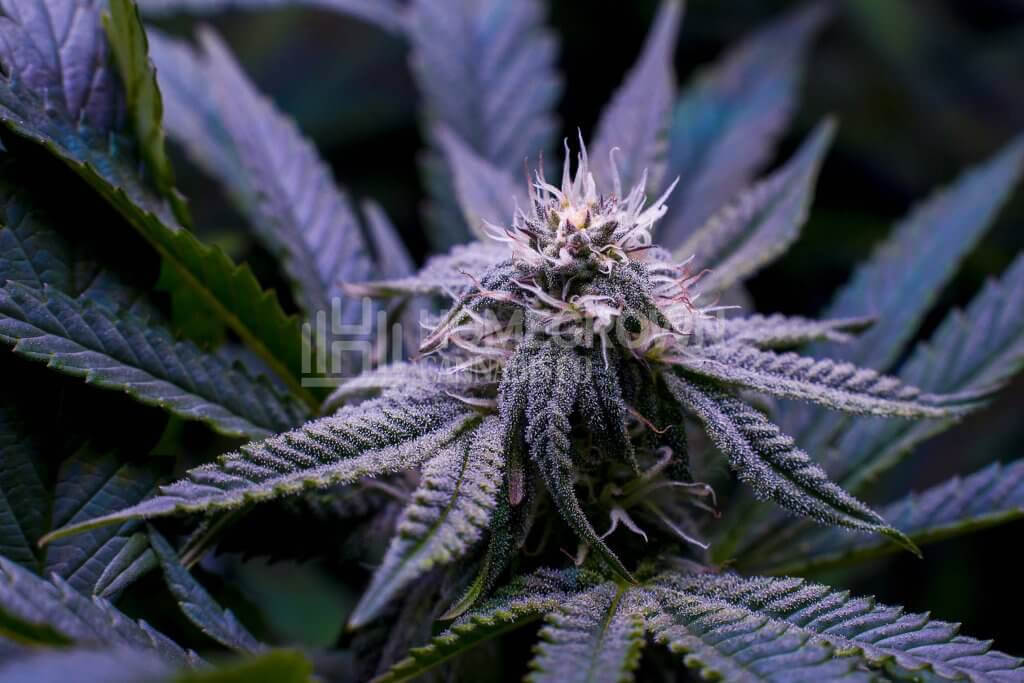
Topping and low stress training: which one is better?
If we had to pick just one way to boost our yields to bumper levels, we’d have to go with low stress training. Thankfully, we don’t have to choose, as it’s entirely possible to use both techniques in tandem.
Topping is a high stress training method, as it involves intentionally damaging the plant by removing the top node(s). Topping cannabis causes growth to slow down, and infection is a risk if the open wound gets exposed to pathogens.
While topping does cause more stress than LST techniques, it’s a common growth management practice. If you top your plants early and maintain a clean grow room, problems are rare. Topping your crops does help to redirect plant growth and limit apical dominance, but to a lesser degree than low stress training.
So why not get the best of both worlds, and use both? By first topping the plants, energy is redirected to lower nodes and branches in addition to new growth. By using low stress training after topping, you expose these lower nodes to even more light and, in turn, explosive growth.
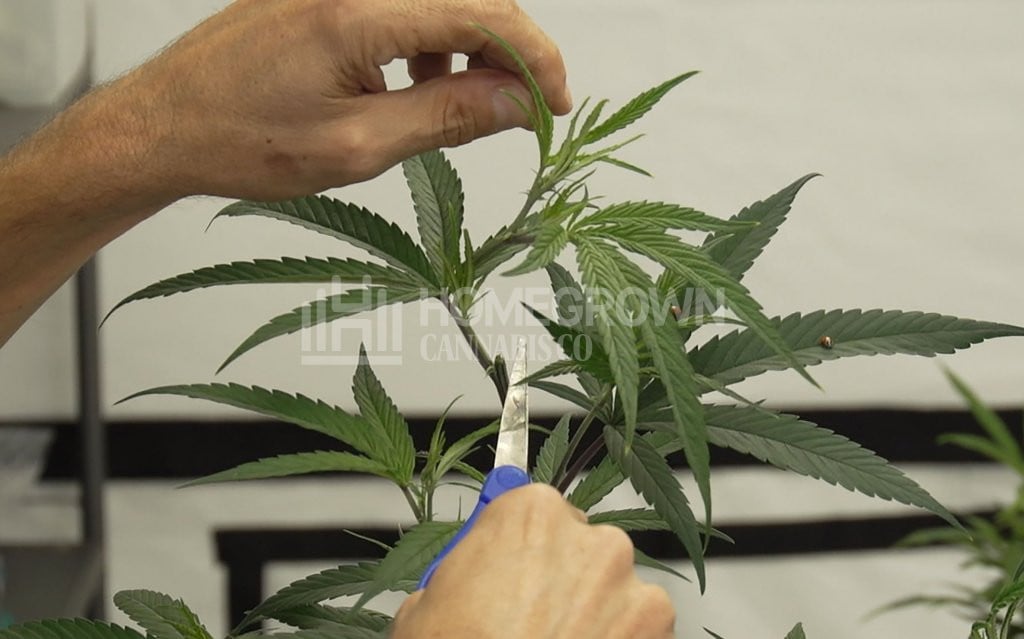
Low stress training tools
You’ll only need a few things to start low stress training your cannabis. Let’s take a look at the essentials.
- Plant ties: It’s important to use ties that won’t scratch, strangle, or damage the plants during low stress training. Using wire and string is a no-go; they’ll cut into the stems, causing wounds and stressing the crops. Take a trip to your local garden store or search online for purpose-made plant ties. You can buy these in packs cheaply, and they won’t damage your precious marijuana.
- Duct or grafting tape: Low stress training isn’t difficult, but there’s a learning period before getting the knack down. During this time, it’s almost inevitable that you’ll accidentally snap a branch or two. Don’t panic; use some tape to wrap the break up like a splint. After a couple of days, the branch will bounce back and continue growing.
- Plant scissors: You need these if you’re planning on topping your plants before starting low stress training. They also come in handy for pruning away fan leaves to create an evenly-exposed canopy. If you’re topping, make sure to sterilize and clean the scissors before use.
We’ve got you up to speed on everything you need to know about low stress training. Now it’s time to roll up your sleeves and get working. Keep reading for our simple step-by-step guide to cannabis low stress training.
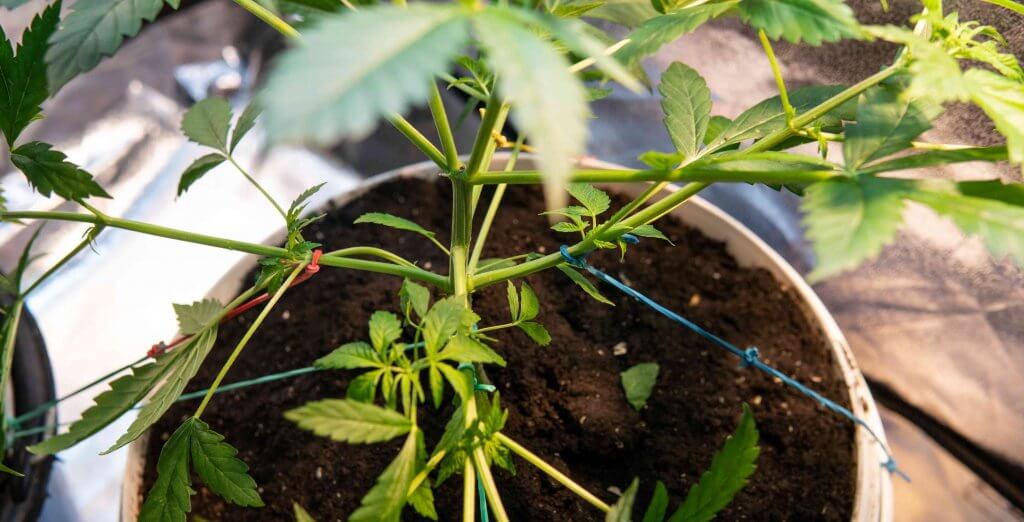
Low stress training step-by-step
Alright, let’s not delay any further and get straight into our five-step guide to low stress training your cannabis plants. If you don’t, or would rather not, top your plants, you can skip straight to the second step.
Step One (optional): Topping the plants
Topping your plants can seriously enhance low stress training results. If you’re growing an autoflower strain, skip this step. Otherwise, we highly recommend topping, but ultimately the decision is yours.
If you decide to go ahead and top, wait for the plant to develop around 6–8 nodes of growth. You’re going to want to top the crop back, leaving 3–4 nodes of growth. Take your sterilized scissors and cut the stem above the node. Don’t cut flush with the nodes; leave a little stem above to protect the petioles below.
Once you’ve topped your plants, they’ll need some time to recover. Once the plant has grown back another few nodes, you can begin low stress training.
Step Two: Preparation and Identification
Now you’re ready to start low stress training your cannabis. Before you begin, take some time to examine the plants. Test the branches for flexibility and try to identify the best places to start training.
You’ll need to consider where you’re going to fix the plant ties. Flexible ties with wire interiors can be fashioned into simple hooks and attached to the lip of standard pots. You can use safety pins to attach the ties to fabric pots. Some growers use fishing weights or stake the ties directly into the soil.
Once you have an idea of how you’re going to approach the plants, gather your equipment and get started.
Step Three: Training stems and branches
The main goal of low stress training is to have all branches receive equal amounts of light. The best way to achieve this is to create a flat canopy of equally high stems. With this in mind, start attaching ties to the branches and bending them into place.
Be gentle but firm with the plants; they’re more malleable than they appear. For bigger branches, distribute the weight amongst several ties and avoid putting too much pressure on one point. Take your time and work your way through the plant, bending wherever necessary to create a plateau of green.
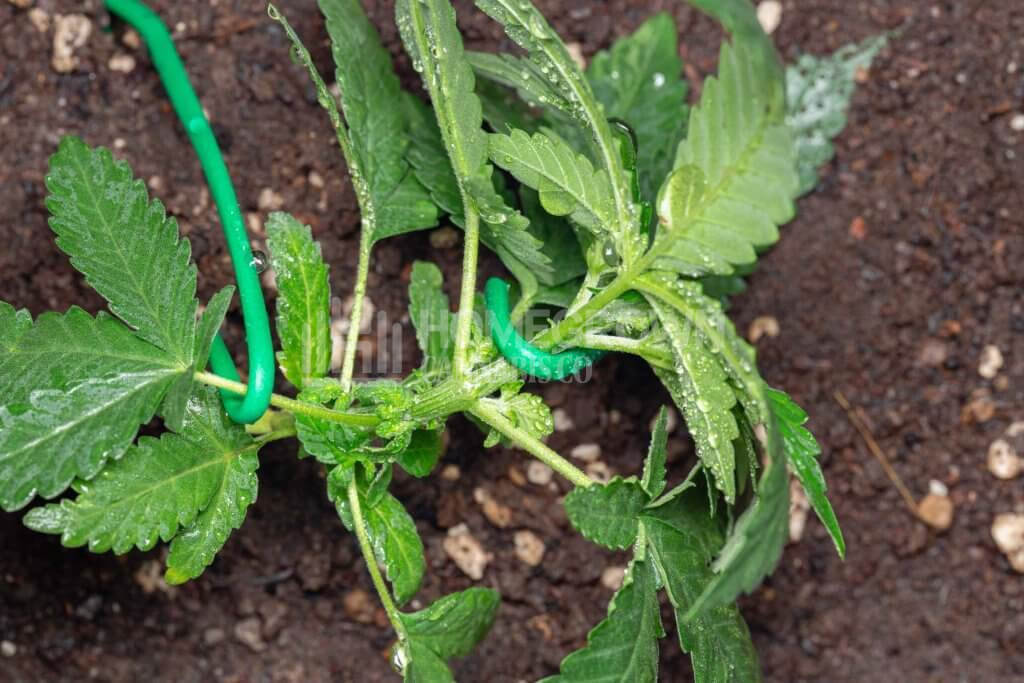
Step Four: Upkeep
After your first low stress training session, you’ll notice the plants recover quickly and reorient themselves toward the light. From here on, it’s your job to maintain that level canopy of growth throughout the vegetative phase.
Take some time daily to check your crop. As soon as a branch or stem starts to outstretch its neighbors, bend it back down into place. Low stress training requires gradual, consistent upkeep, so keep up your training regime and don’t slack off. As the plants settle into their new shape, it becomes easier to maintain that all-important canopy.
Step Five: Flowering
Your cannabis plants should be fully shaped to your desired configuration by the time they start to flower. Once blooming begins, you can expect the plants to double in size as they undergo a final spurt of growth.
Redouble your efforts to maintain the canopy you’ve established during this stretching phase. After three or four weeks of flowering, the plants stop stretching and keep their shape until harvest time. Ease off on bending and twisting, relax, and wait for that bumper harvest.
What are the best strains for LST?
There’s no outright ‘best’ strain when it comes to low stress training. All cultivars can benefit from this easy and unobtrusive technique. With that said, some strains are more generally suited to low stress training.
Indica or indica-dominant hybrids are always a good choice, as they tend to grow shorter and bushier than their sativa counterparts. More compact growth characteristics mean the plant won’t fight against the low stress training as much.
Increasing yield is the main reason for using low stress training in cannabis. Choosing a high-yielding strain is an obvious choice to boost your harvest even more. The following are a few strains that produce excellent low stress training results.
Afghan Kush feminized
Afghan Kush feminized is an iconic landrace-based indica boasting high yields of resin-soaked buds. Smoking this classic delivers a rich, earthy, sophisticated flavor and serious relaxation. Excellent genetics makes Afghan Kush resilient and highly tolerant, perfect for low stress training.
Lemon Diesel feminized
Lemon Diesel feminized is a tangy, sweet, and sour hybrid packed with THC and refreshing flavors. The lip-smacking buds impart a double dose of cerebral and physical effects. This fruity hybrid also exhibits indica growth characteristics that respond well to low stress training.
Amnesia Haze autoflower
Amnesia Haze autoflower is our suggestion for sativa lovers looking for good low stress training candidates. Amnesia Haze delivers an energizing and euphoric high with a sweet citrus and deep earthy flavor. This autoflower strain takes longer than most, giving you plenty of time to create the perfect canopy.
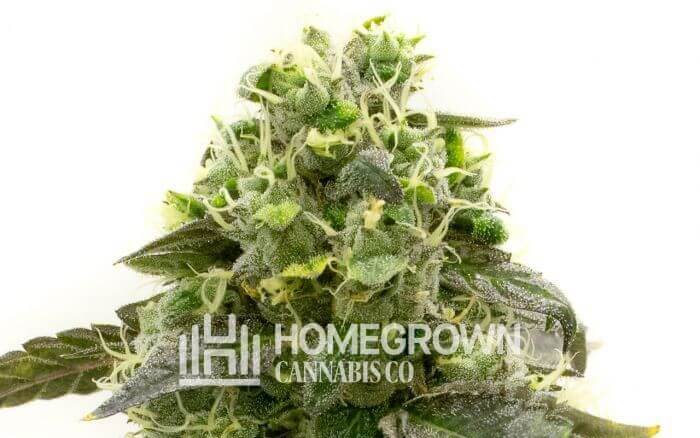
FAQs
We’ve put together a few of the most common queries people have about low stress training. Check them out below, and hopefully, they’ll help clear up any unanswered questions you might have.
Can you do low stress training on autoflowers?
Low stress training autoflowers is absolutely possible. Many autoflower strains are small, and using low stress training can help to bump up their productivity. Just keep in mind, autoflowers often have a much shorter growth period than regular strains. Start training the plants early and consistently.
We’ve suggested combining topping with low stress training above, but topping isn’t recommended when it comes to autoflowers. Auto strains often have less time to recover from stress or mismanagement, so it's best to skip this step.
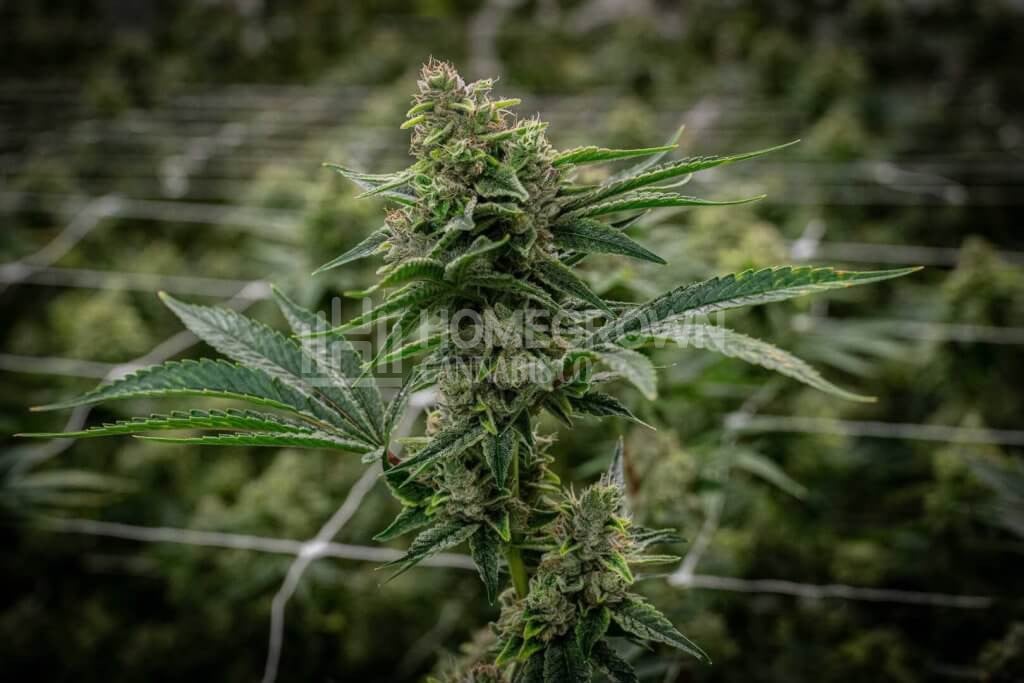
Can you do low stress training during flowering?
You can continue low stress training during flowering for about a month. After a month, the plants switch their focus to growing buds instead of stems and branches. While you might need to make minor adjustments, the bulk of your work is over at this point.
We mentioned it above, but it bears repeating here; you can’t start low stress training during flowering. Trying to shape the never-before-trained plants as they flower would be both difficult and harmful.
Does LST increase yield?
Low stress training is an extremely effective way to increase your yield. LST techniques aren’t some magic trick or esoteric secret; they simply utilize basic scientific principles of energy conversion and efficiency. With more plant nodes receiving more light, they become more productive. Higher yields are a foregone conclusion.
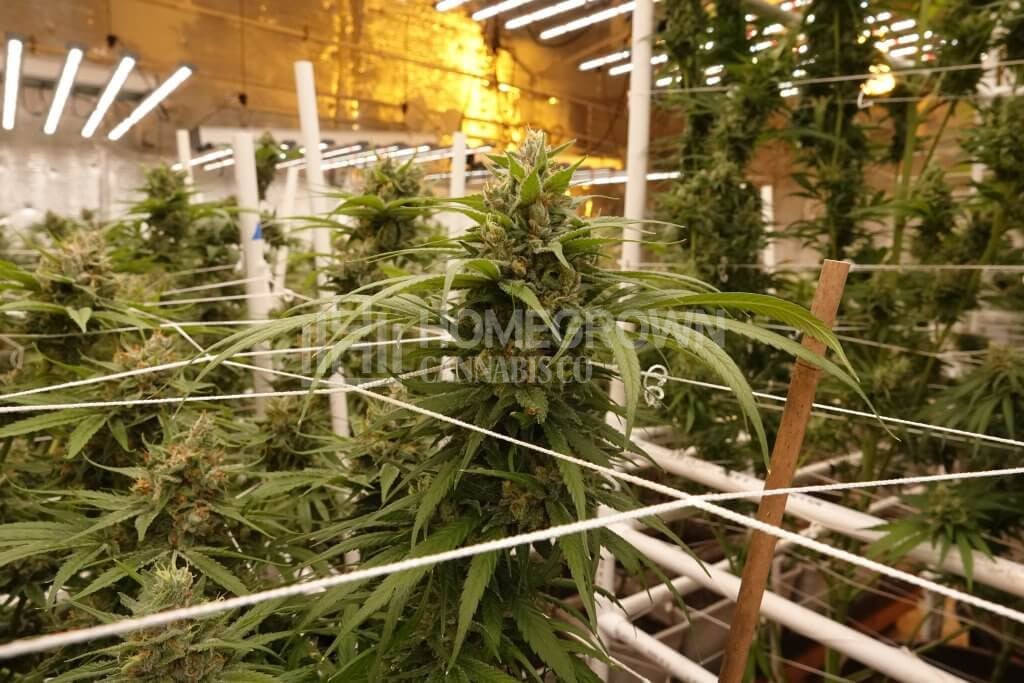
A low risk, high reward technique
If you’ve been interested but hesitant to try out low stress training before, we hope you’ll reconsider and give it a shot. The LST technique we’ve shown you is a straightforward process all gardeners can use to boost their yields massively.
If you’re itching to get going, we’ve got everything you need to get started at Homegrown Cannabis Co. Browse our wide selection of seeds, or use the links above to go straight to our recommended low stress training cannabis strains.
For more cannabis cultivation tips, tricks and guides, follow us on social media or subscribe to our newsletter. Remember, whatever you do, have fun!
About the author: Parker Curtis
Parker Curtis has around a decade of cannabis-growing experience, specialising in soil-less and hydro grows. He’s mastering outdoor, greenhouse, and indoor grows.
